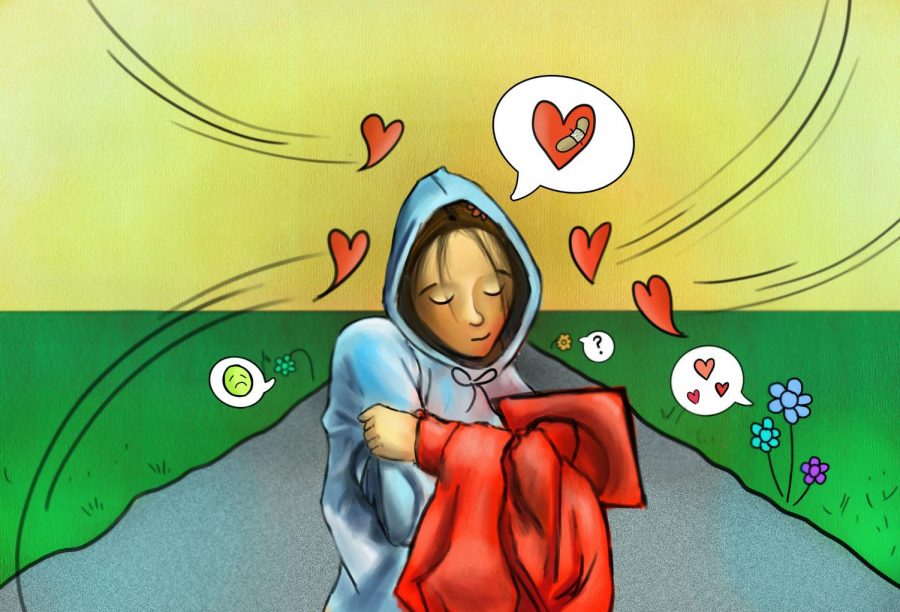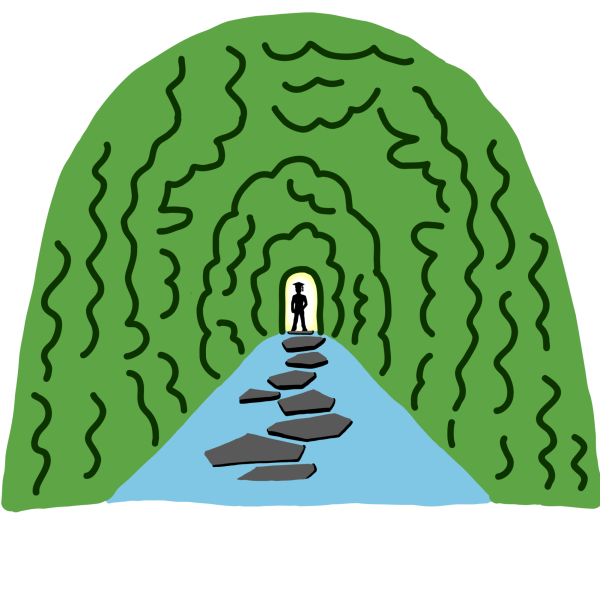Kindness in a Barren Wasteland
Woodbridge High can create a better support system in order to aid students struggling with mental health
Receiving warmth and kindness from each corner of a community aids in healing or managing personal struggles.
Mental health took the forefront last year when people all across the globe were stuck at home, in which the “new normal” revealed systemic issues in the way we treat mental health. The past year exposed the need for more inclusive mental health resources and for mental illness to be removed from online trends.
Mental health programs in schools and communities need to see a vast improvement in the way they reach out to people in need of help and in the methods they use to help these people. According to an analysis by the Center for Disease Control and Prevention, 20% of Americans under the age of 18 suffer from some type of mental disorder. This means that around 15 million children and teens across America could benefit from resources which deal with these mental illnesses. Many students lack the privilege of seeking help on their own and instead turn to their schools for support.
Thus, it is integral that infrastructures of these school resources be equipped to handle the needs of students with mental health challenges. The American Institute for Research suggests that to meet the needs of students, schools should implement three tiers of support which would include positive mental health exercises for all students, preemptive harm prevention services for students who are at risk of developing problems and specific programs for those who already suffer from mental health issues. The mental health exercises that counselors would use as part of this program would range from meditation to lessons on other activities that a student could do in order to cope with their mental health problems. The counseling department at Woodbridge currently has multiple programs which address the mental health of students such as hope squad and wellness wednesday. If the department was to implement this approach of reaching out to students with different levels of support on top of what they are already doing, students would have a stronger system to turn to when they need resources to strive for improved mental health.
Furthermore, poor mental health has become increasingly glamorized and romanticized online. While normalizing mental health discussion is important, this social media trend has gone so far as to glamorize restrictive and sometimes deadly mental diseases. According to the Scientific American, some people may feign mental and physical illnesses in order to satisfy a need for attention or validation. Television shows like 13 Reasons Why portray mental illness in an unrealistic and glamorized manner. On TikTok, Tumblr and Instagram, it is easy to find accounts showing off self-harm and anxiety or depression prescription medicine with the search of a few keywords. Depression becomes an aesthetic complete with color stories and mood boards instead of truly demonstrating the harmful and insidious nature of these disorders and their effects on students.
While opening the floor to mental health discussion is crucial to the ending of social stigmas, this aestheticization and trend-esque treatment to mental illnesses is detrimental. Not only does this behavior devalue illnesses like depression and anxiety, it also decreases how seriously society treats those with mental health issues. This glamorization invalidates the experiences of individuals afflicted with mental illness, while also creating a dangerous and toxic social ecosystem that can be debilitating to any given individual.
Amidst the added stress this year during quarantine, Woodbridge High students find new ways to cope with their mental health.
Senior Brooke Oh tries to distract herself with art projects and her hobby of baking to de-stress.
“My advice for people struggling with their mental health would be to try talking to someone about their mental health and finding healthy ways to deal with stress and other mental health issues in ways that are stress-relieving and enjoyable,” Oh said.
Senior Jewel Al Kurnas emphasizes maintaining a good morning routine to start the day right.
“The best advice I can give for anyone who struggles with their mental health is to take social media/cell phone breaks every now and then, as I find social media and cell phones to be really toxic and damaging to our mental health at times,” Al Kurnas said.
Senior Kyoka Ide found herself struggling a lot this year with college applications, adapting to the new learning environment at home and the traditional workload of schoolwork.
“My friends who listened to my rants and struggles this year were probably my heroes. My mental health was honestly a wreck this year, but taking to others and taking breaks to spend time on things I like to do was really a helpful routine for me,” Ide said.
Woodbridge High Mental Health Specialist Megan Humphreys advises students to seek help from the mental health team at school to allow yourself the opportunity to maintain a healthy mental well-being in an unprecedented year.
“You are not alone. You are not hopeless. There is hope for us in our world, and there is hope for our mental health. When we forget about hope, we begin to spiral. When we reach out to others, we are telling ourselves that we do matter, we do have value and that we are worth it. We hold onto hope for ourselves and for our future.” Humphreys said. “For me, I try to get outside and go for a walk to clear my head everyday. I don’t always get to it, but it’s a goal I have for myself. I reach out to my support people (friends and family) all the time via phone calls and socially distanced outdoor visits. It helps me to be able to talk about my day, what I’m feeling and anything else going on. This is a way I stay accountable for my own mental health and find some refreshment in the midst of the struggles.”
During these trying times, it becomes increasingly important to remain anchored. As we proceed into the future, we must remember to normalize but not glamorize mental illnesses. Realistic positivity, not overt pessimism, is necessary for progress forward as we continue confronting stigmas and open the floor to further discussion of mental health.
Your donation will support the student journalists of Woodbridge High School. Your contribution will allow us to purchase equipment and cover our annual website hosting costs.

Hello Warriors! My name is Daniel Roman and I am an illustrator who loves the idea of sharing my creative passion with everyone through the Golden Arrow....









